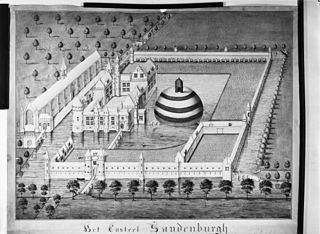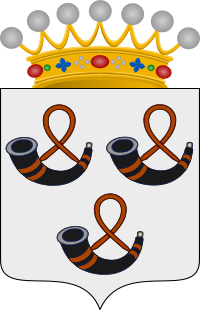
Goes is a city and municipality in the southwestern Netherlands on Zuid-Beveland, in the province of Zeeland. The city of Goes has approximately 29,000 residents.

Haamstede is a village in the Dutch province of Zeeland. It is a part of the municipality of Schouwen-Duiveland. The village is known for Haamstede Castle.

Noordwelle is a village in the Dutch province of Zeeland. It is a part of the municipality of Schouwen-Duiveland, and lies about 5 km southwest of Scharendijke.

Stavenisse is a village in the Dutch province of Zeeland. It is a part of the municipality of Tholen, and lies about 22 kilometres (14 mi) west of Bergen op Zoom.

's-Heerenhoek is a village in the Dutch province of Zeeland. It is a part of the municipality of Borsele, and lies about 12 km east of Middelburg.

Nieuwdorp is a village in the Dutch province of Zeeland. It is a part of the municipality of Borsele, and lies about 9 km east of Middelburg.

Lewedorp is a village in the Dutch province of Zeeland. It is a part of the municipality of Borsele, and lies about 9 km east of Middelburg.

's-Gravenpolder is a village in the Dutch province of Zeeland. It is a part of the municipality of Borsele, and lies about 21 kilometres east of Middelburg.

's-Heer Abtskerke is a village in the Dutch province of Zeeland. It is a part of the municipality of Borsele, and lies about 19 km east of Middelburg.

Baarland is a village in the Dutch province of Zeeland. It is a part of the municipality of Borsele, and lies about 21 km east of Middelburg.

Ellewoutsdijk is a village in the Dutch province of Zeeland. It is a part of the municipality of Borsele, and lies about 18 km east of Vlissingen.

Eversdijk is a hamlet in the Dutch province of Zeeland. It is located in the municipality of Kapelle on the island of Zuid-Beveland. It was built in a typical circular style which is fairly common in south Beveland. The coat of arms of Eversdijk contains a sterling silver wild boar of a black Tincture on a loose green sinople soil.

's-Heer Hendrikskinderen is a village in the municipality of Goes, about 2 km to the west of the city of Goes in the Dutch province of Zeeland.

Sint Laurens is a village in the Dutch province of Zeeland. It is located in the municipality of Middelburg, about 3 km north of the city.

Wissekerke is a hamlet in the Dutch province of Zeeland. It is located in the municipality of Goes.

Brederode Castle, also called the Ruins of Brederode, is located near Santpoort-Zuid. The castle was founded in the second half of the 13th century by William I van Brederode (1215–1285). William was a descendant of the lords van Teylingen, who were related to the counts of Holland. The castle formed part of the high lordship Brederode, which had been given in loan in the 13th century to the lords of Brederode by the count of Holland.

Carolus Niellius was a Dutch Remonstrant minister.
Beatrix of Limburg, was a German noblewoman who probably for a while acted as regent of the county of Laurenburg for her grandsons, who later became counts of Nassau.

Zandenburg was a famous castle just south of Veere. Nothing remains of it, except some foundations below ground level.

The Van Watervliet family is a Dutch noble family of businessmen and landowners who rose to prominence during the early Renaissance in the County of Zeeland of the Seventeen Provinces of the Holy Roman Empire, and later in the Netherlands and British colonies of North America.



























